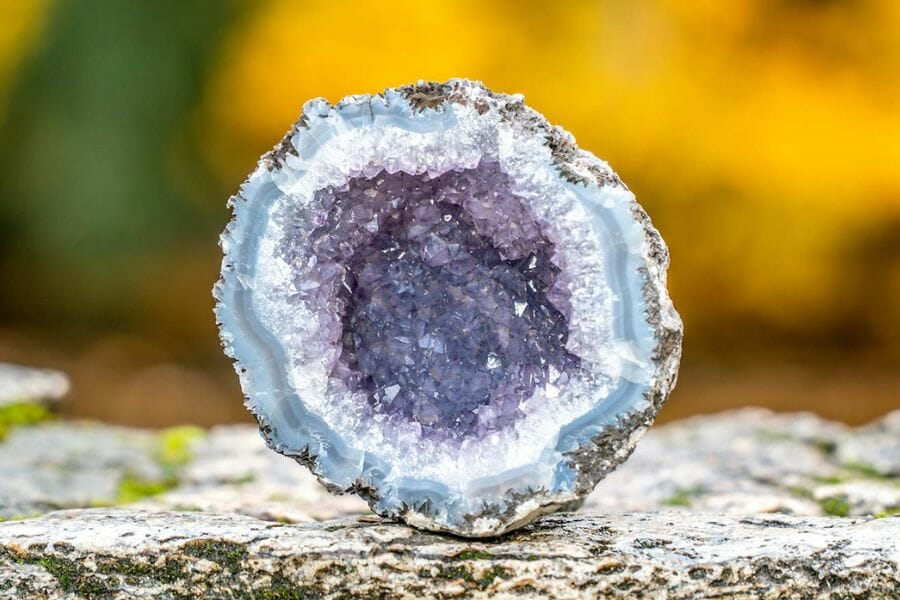Arizona is known for its abundance of these stunning rock formations, but they can be hidden in remote areas and difficult to locate. Without the right information, finding geodes in Arizona can be like looking for a needle in a haystack. However, with a little help from local experts and our insider tips, anyone can discover the joy of geode hunting here.
Geodes are truly a sight to behold. With so many options, there is no reason not to try your luck at uncovering these incredible formations. Whether you’re a seasoned hunter or just starting, there are plenty of opportunities to discover the beauty of geodes in the Grand Canyon State.
What Are Arizona Geodes Anyway?
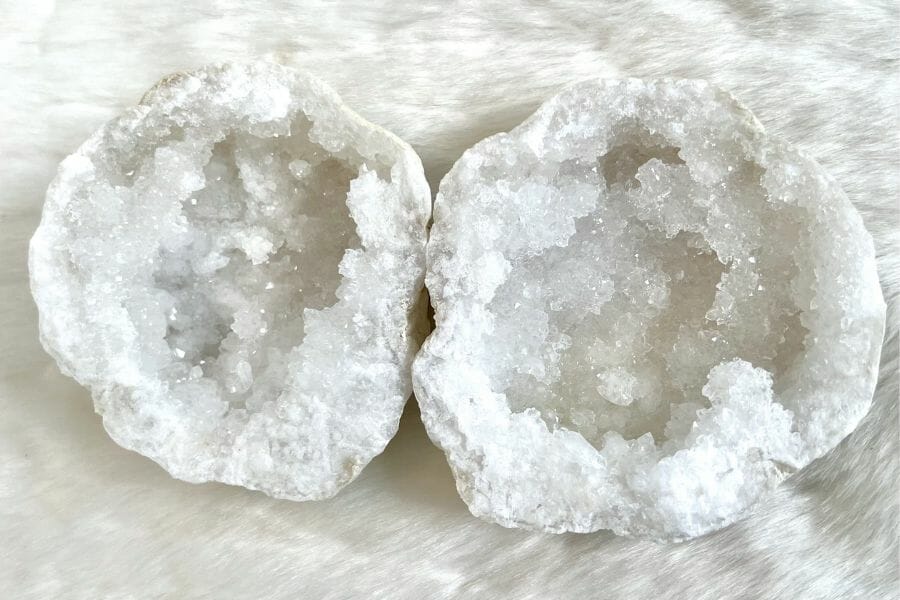
Geodes are like treasure boxes in rock form. These unassuming-looking rocks can be found worldwide, but are especially prevalent in places like Arizona. They may look plain on the outside, but inside lies a beautiful surprise: a cavity filled with sparkling crystals. Think of them like a piñata – once you crack them open, the good stuff comes pouring out!
We’ve made an article that will show you what does a geode look like to help you find what you’re looking for.
Geodes form when mineral-rich water seeps into a hollow space in a rock and then evaporates, leaving behind a layer of crystals. The result is a beautiful natural wonder ranging in color from deep purples to bright blues and greens. Arizona’s unique geology makes it very simple for geodes to form.
The Types Of Geodes Found In Arizona
Geodes come in various sizes and shapes and can be found anywhere worldwide. The kind of crystal a geode contains determines how much a geode is worth and its allure. Arizona is home to the following geodes:
- Agate geodes
- Chalcedony geodes
- Quartz geodes
- The deep experience and understanding of our team about the area
- Recommendations from local groups and clubs
- How easy it is to get the a particular location
- Safety and potential hazards when collecting
- Weighing private and public locations
- The ability for both experienced and novice geode enthusiasts to find great samples
With these factors in mind we’ve been able to put together a fantastic list that just about anyone can use!
The Best Places To Find Geodes in Arizona
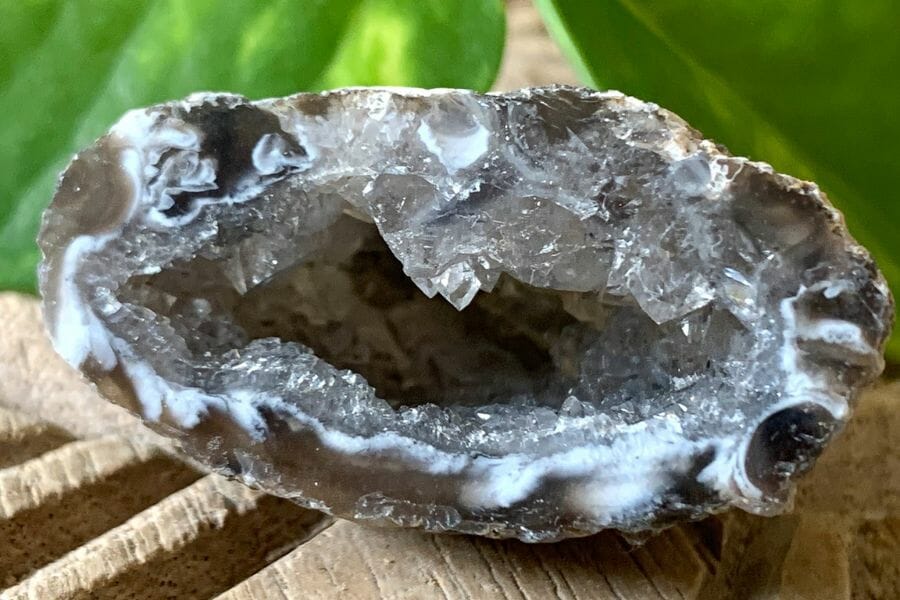
We’ll start by listing our top geode-hunting locations in Arizona. There are many fantastic locations for gem mining in Arizona, but only a select few are ideal for what we’re looking for. Even though some of these places are less well-known, they frequently provide excellent possibilities while searching.
Always Confirm Access and Collection Rules!
Before heading out to any of the locations on our list you need to confirm access requirements and collection rules for both public and private locations directly with the location. We haven’t personally verified every location and the access requirements and collection rules often change without notice.
Many of the locations we mention will not allow collecting but are still great places for those who love to find beautiful rocks and minerals in the wild without keeping them. We also can’t guarantee you will find anything in these locations since they are constantly changing.
Always get updated information directly from the source ahead of time to ensure responsible rockhounding. If you want even more current options it’s always a good idea to contact local rock and mineral clubs and groups
Canyon Lake Reservoir
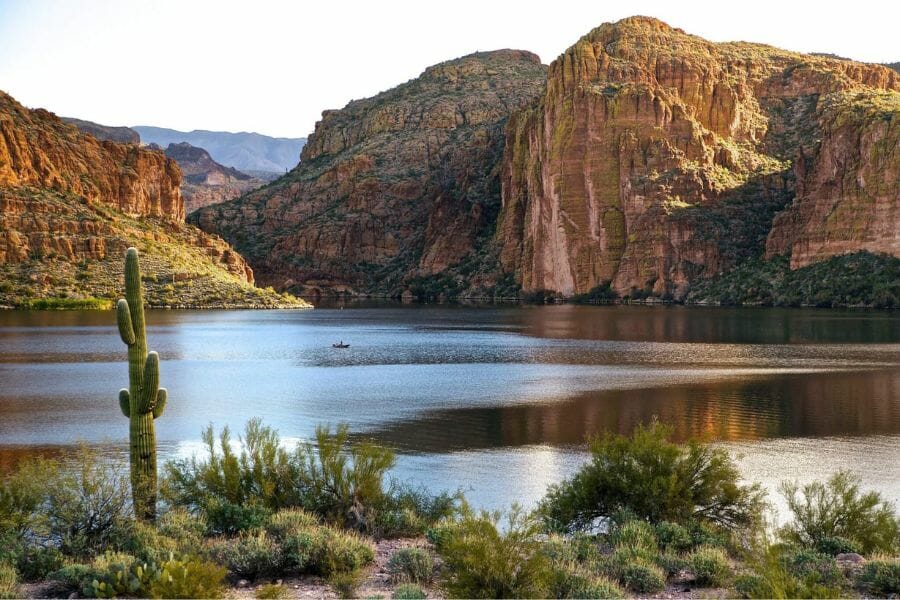
Canyon Lake Reservoir is a gorgeous oasis in the Arizona desert. It’s a man-made lake created by the Salt River Project in 1925 and is one of four reservoirs that are part of the Salt River system. The lake is in the Tonto National Forest, surrounded by the stunning Superstition Mountains. The area is known for its incredible geology, with layers of rock formations that tell the story of millions of years of geological history.
The terrain around Canyon Lake Reservoir is rugged and rocky, with steep canyon walls and towering cliffs. The lake is surrounded by stunning red rock formations rising from the water’s edge. With its stunning scenery, rich geological history, and unique geography, it’s no wonder this man-made lake has become one of the most popular attractions in Arizona.
Before you bring anything home, make sure you’ve read up on the State of Arizona’s most recent collecting regulations.
Where we found geodes in Canyon Lake Reservoir
While there may be some geodes in the surrounding terrain and rock formations around Canyon Lake Reservoir, the lake itself is not typically a prime spot for geode hunting.
DON'T MISS OUT ON ANY GREAT FINDS!
While you're out searching for Geodes you're going to find a lot of other interesting rocks and minerals along the way. The last thing you want to do is toss out something really interesting or valuable. It can be easy to misidentify things without a little guidance.
We've put together a fantastic field guide that makes identifying 140 of the most interesting and valuable rocks and minerals you will find REALLY EASY. It's simple to use, really durable, and will allow you to identify just about any rock and mineral you come across. Make sure you bring it along on your hunt!
Gila County
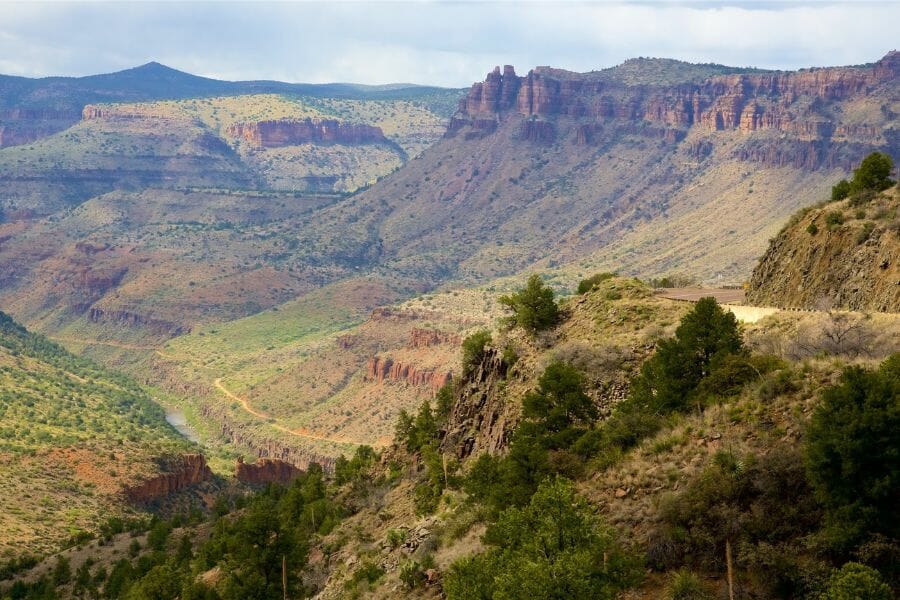
Gila County is a hidden gem of natural beauty in central Arizona. The county is located in the Tonto National Forest, home to some of the most spectacular geology, terrain, and geography in the state. The area is known for its stunning mountain ranges, including the Pinal Mountains and the Sierra Ancha, and is a paradise for outdoor enthusiasts and nature lovers alike. The geology of Gila County is incredibly diverse, with a variety of sedimentary, volcanic, and igneous rock formations that tell the story of millions of years of geological history. Its geology also makes it one of the best sources of Arizona crystals.
The terrain is rugged and varied, with steep canyons, towering cliffs, and rolling hills providing endless geode hunting opportunities. The area’s geography is equally impressive, with lush forests, sparkling rivers, and expansive deserts. With its breathtaking scenery, rich geological history, and diverse landscapes, it’s no wonder that this hidden gem has become one of the most popular spots in Arizona for outdoor recreation and exploration.
Where we found geodes in Gila County
- Land around Payson area
- Payson area, around Ellison Creek
- Payson area, Geode Hill
Maricopa County
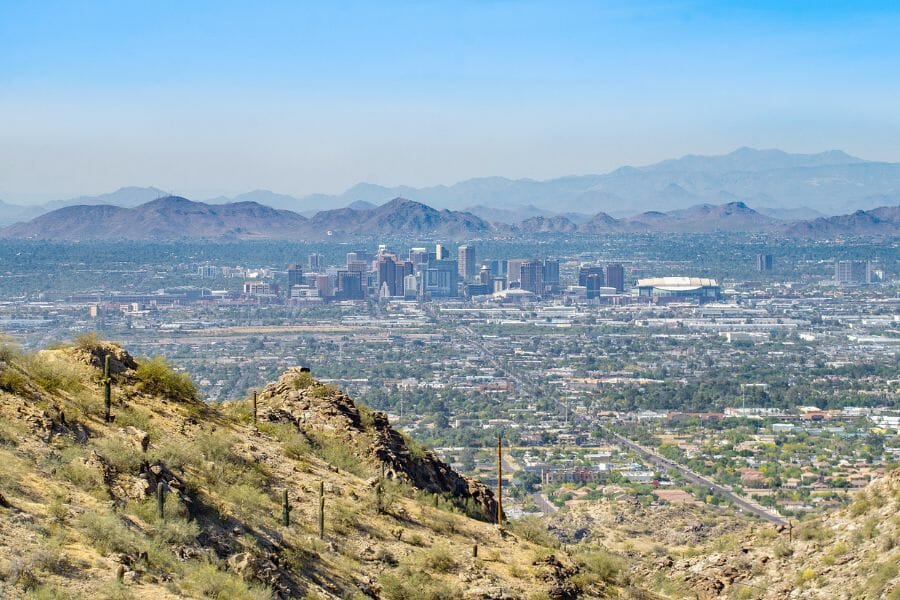
Hernando County is a great place to enjoy the outdoors. Its geography is diverse, with large stretches of flat terrain interspersed with rolling hills and small mountains. The county’s terrain varies from coastal marshes to pine flatwoods and sandhill ecosystems. Geologically, the county is part of the Ocala Uplift – an area of uplifted limestone and sandstone that produces stunning karst formations.
In addition, there are numerous lakes and springs throughout the county. The climate in the area is generally mild, with warm summers and mild winters. Average temperatures range from the mid-60s in winter to the mid-90s in summer. The area receives an average of 52 inches of rainfall annually, making it an ideal spot for outdoor activities like geode hunting.
Where we found geodes In Maricopa County
- Gila bend along ledges further east
- Aguila area, 2 miles west on US 60 to the ranch road, 5 miles south on the ranch road to fork.
- Big horn area, Travel south to Javelina Camp at the southeast base of the mesa.
- Hassayampa area, search in debris on the south side of the pass after traveling 8 miles on the Gillespie Dam route and 21 miles west to Fourth of July Peak.
- The Sauceda Mountains gather northward in the Midway area, 7 miles east on Jeep road to the west side of Hat Mountain.
- Travel southwest on Apache Trail (Route 88), then south for 112 miles to reach the Port of Phoenix on Canyon Lake Reservoir from Roosevelt Dam.
- Tortilla flat area at the sides of Canyon Lake Reservoir.
Mule Creek
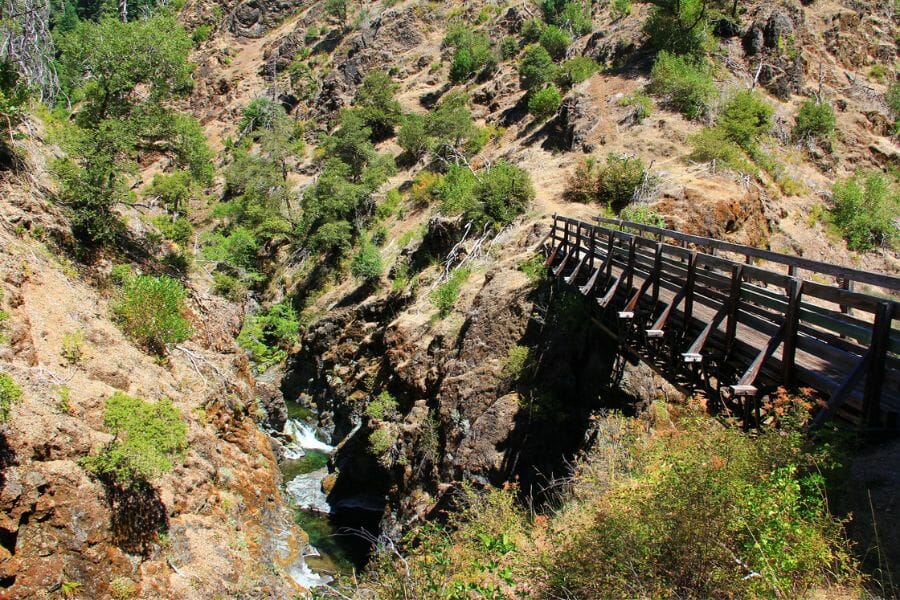
Mule Creek is a picturesque stream that flows through southeastern Arizona, surrounded by stunning natural beauty. The creek is known for its crystal-clear water, which sparkles in the sunshine, and provides an idyllic setting for outdoor recreation and relaxation. The area’s geology is equally impressive, with various rock formations that tell the story of millions of years of geological history.
The terrain around Mule Creek is rugged and varied, with steep canyon walls and rolling hills providing endless exploration and geode hunting opportunities. The geography of the area is equally diverse, with lush forests, wide-open meadows, and sparkling streams that support a wide range of plant and animal life. With its stunning scenery, rich geological history, and diverse landscapes, Mule Creek is a true hidden gem of southeastern Arizona.
Where we found geodes in Mule Creek
Geodes can be collected along both sides of Mule Creek.
Yuma County
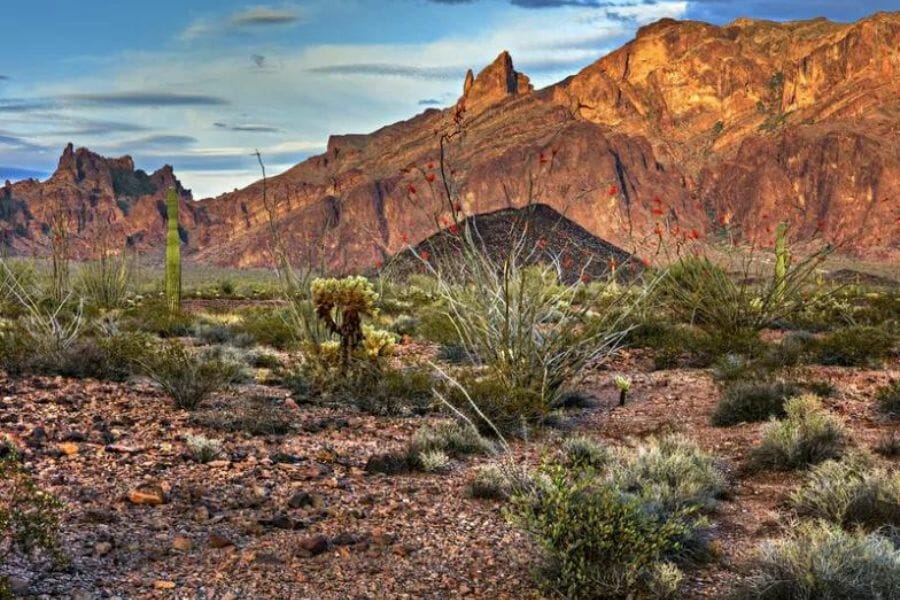
Yuma County is a unique and diverse region located in southwestern Arizona. The county is known for its vast, open landscapes and rich natural beauty. It’s also known for its rich cultural history, as it was home to several Native American tribes and played an essential role in the United States’ westward expansion. The area’s geology is fascinating, with various sedimentary and volcanic rock formations that tell the story of millions of years of geological history.
The terrain in Yuma County is largely flat, with expansive deserts and wide-open spaces that provide endless outdoor exploration and recreation opportunities. The area’s geography is equally diverse, with winding rivers, towering mountains, and lush riparian zones that support a wide range of plant and animal life. From the Sonoran Desert’s stark beauty to the Colorado River’s winding waters, Yuma County is a paradise for outdoor enthusiasts and nature lovers.
Where we found geodes in Yuma County
- Several places in Castle Dome District, the Castle Dome Mountains, and the Middle Mountains.
- West of US 95 junction to the Castle Dome District, 1.9 miles on dirt road, take the north fork to its end at 2.5 miles.
- Southwest half a mile, as beds in Quartzsite area.
- all regional draws, washes, hillsides
- Welton area, Southwest of Cabeza Prieta Mts., in the area of many unlisted collecting localities.
Other Great Places To Dig For Arizona Geodes

After mentioning our favorites, we wanted to share about the other places on our list. We’ll next list a few more general areas where we’ve succeeded and state each suggestion per county.
Our recommendations by county
| County | Location |
| Gila | Land around Payson |
| Gila | Payson area, around Ellison Creek |
| Gila | Payson area, Geode Hill |
| Greenlee | Both sides of Mule Creek road in Clifton area |
| Greenlee | Guthrie area, just below summit on west side |
| Greenlee | York area, 1 mile north on SR-75 then right on Mule Creek Road, collect along both sides |
| Maricopa | Gila bend farther east, along ledges |
| Maricopa | Aguila area, 2 miles west on US 60 to ranch road on left, 5 miles south on ranch road to fork |
| Maricopa | Big horn area, the southeast base of the mesa, south to Javelina Camp |
| Maricopa | Hassayampa area, search in debris on the south side of the pass after traveling 8 miles south on the Gillespie Dam route and 21 miles west to Fourth of July Peak. |
| Maricopa | Midway area, in the Sauceda Mountains, 7 miles east on Jeep road, gather on the western slope of Hat Mountain. |
| Maricopa | Roosevelt Dam, southwest on Apache Road (Rte. 88), to Port of Phoenix on Canyon Lake Reservoir, then south for 1.5 miles |
| Maricopa | Tortilla flat area, on the Canyon Lake Reservoir sides |
| Pinal | Florence area, From the right-hand side of the RR tracks, head east through the underpass to the Price Flag Stop (marking 969), then turn north for 9 miles ot reach Martinex Silver Bell Mine. |
| Pinal – Maricopa | Apache Junction, Northeast into Maricopa county, 15 miles along the Apalache trail, all area along both sides of highway. |
| Yavapai | 24 miles northeast of Morristown, in the surrounding area of Castle Hot Springs |
| Yuma | Several places can be found in the Castle Dome District, the Castle Dome Mountains, and the Middle Mountains./td> |
| Yuma | Castle Dome District, take the north fork to its end at 2 miles./td> |
| Yuma | Quartzsite area, southwest 0.5 miles, as beds./td> |
| Yuma | Every local stream, wash, and slope/td> |
| Yuma | In the Cabeza Prieta Mountains, Welton area/td> |
Common Geode-Hunting Questions
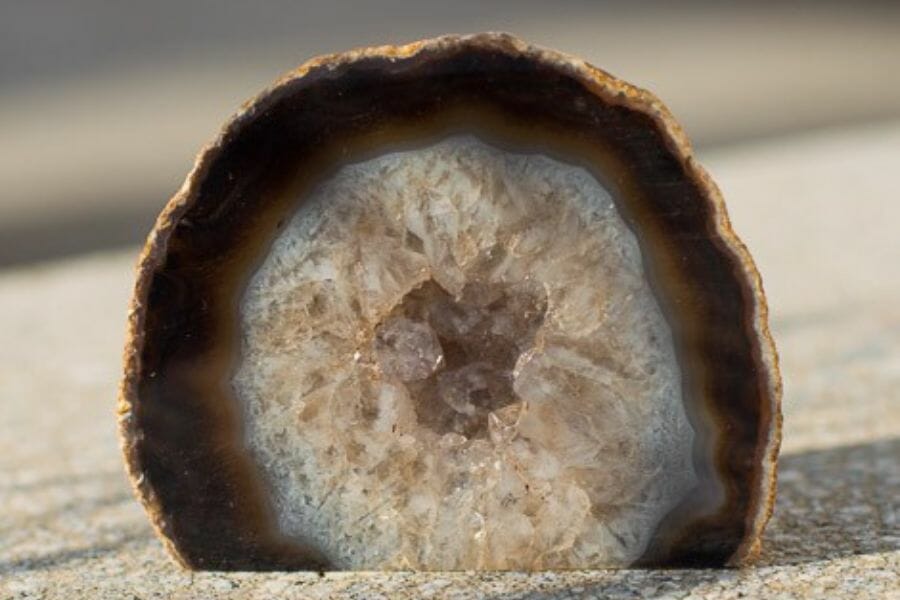
Frequently asked questions about geode hunting in Arizona should also be answered here, including the following:
Where can you find amethyst geodes in Arizona?
Although amethyst geodes are not naturally found in the state, they may be purchased in several Arizona rock and mineral shops. You can also find them in rock shows that often occur in the state and buy them from merchants.
Is it illegal to collect geodes in Arizona?
It is important to keep in mind that certain areas in the state that may have regulations or guidelines in place to protect the land and preserve its natural resources. It’s always a good idea to research the specific area you plan to visit and make sure you abide by their local laws. You must also have the permission to collect if you’re planning to go to a private property to search for geodes.
The Best Places To Buy Geodes In Arizona
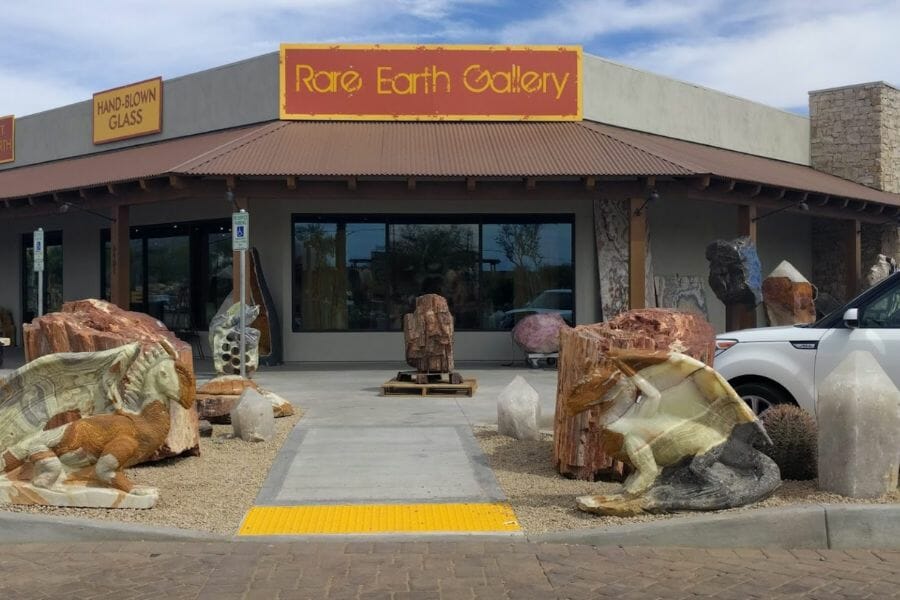
If you’re an enthusiast or collector, getting your hands on geodes would always feel amazing! But not everyone likes to do the dirty and hard work. So, if you’re one of those people who wants to find geodes without having to do that, this is for you!
Here are some of our preferred neighborhood rock shops where you may discover and purchase geodes of our choice:
- Arizona Lapidary and Gem Rough – 5817 E Speedway Blvd, Tucson, AZ 85712, United States
- Amazon – We discovered that there is a large selection of geodes on Amazon. There are even complete kits that include geodes to crack apart for individuals who would prefer to do it themselves.
- Arizona Rock Shops – 4107 AZ-68, Golden Valley, AZ 86413, United States
- Desert Gardens International Rock – 1055 Kuehn St, Quartzsite, AZ 85346, United States
- Miner’s Rock Shops – 1103 W Fairmont Dr, Tempe, AZ 85282, United States
- Rare Earth Gallery – 6401 E Cave Creek Rd, Cave Creek, AZ 85331, United States
Additional places to find geodes in nearby states
Check out our guides for nearby states if you’ve already tried all of our suggestions above or if you’re planning a trip outside of the state:
If you have any recommendations for our list, please leave a comment below!

